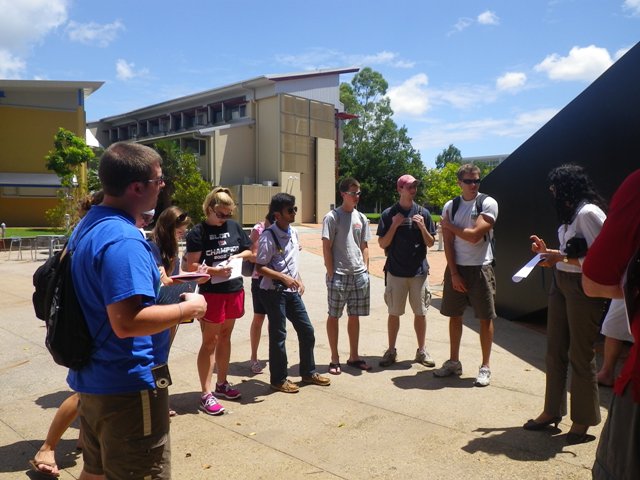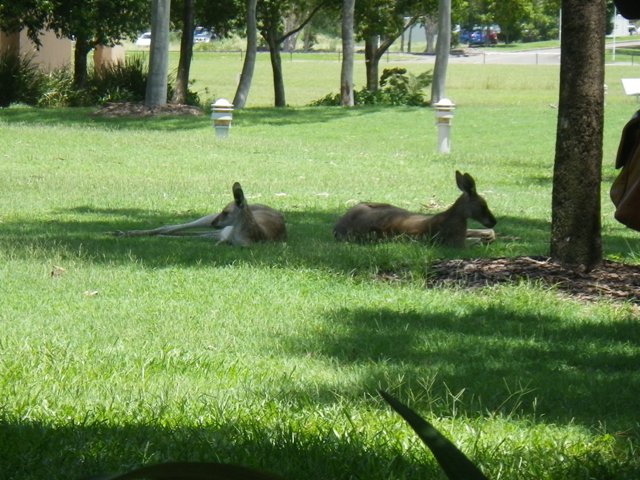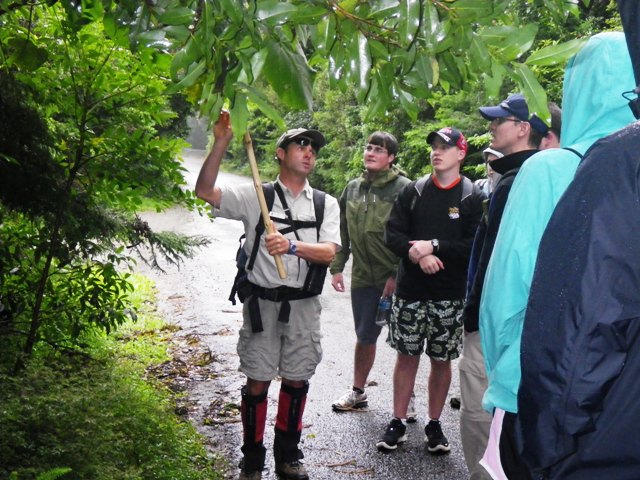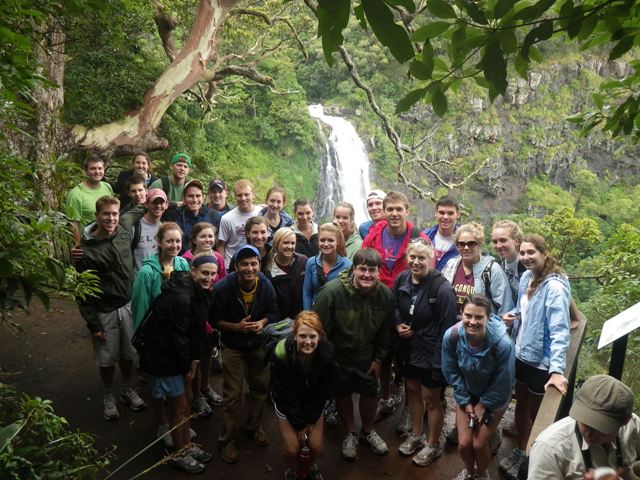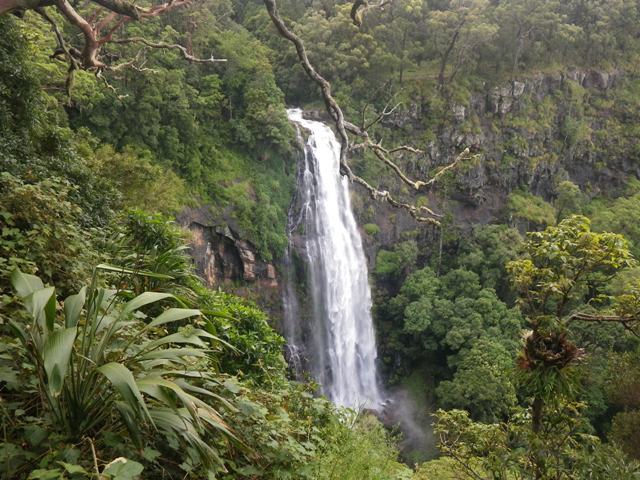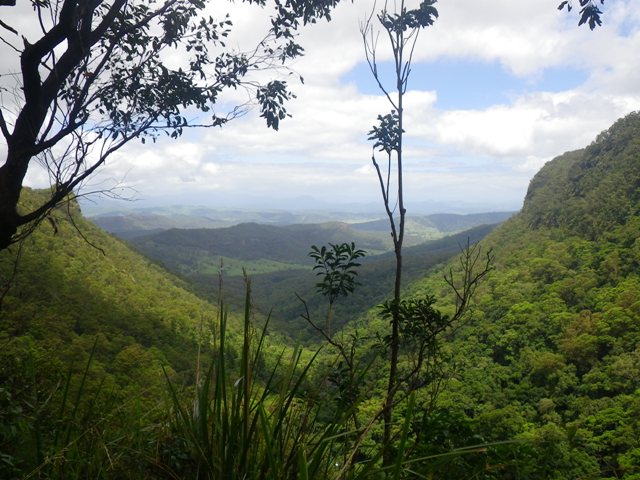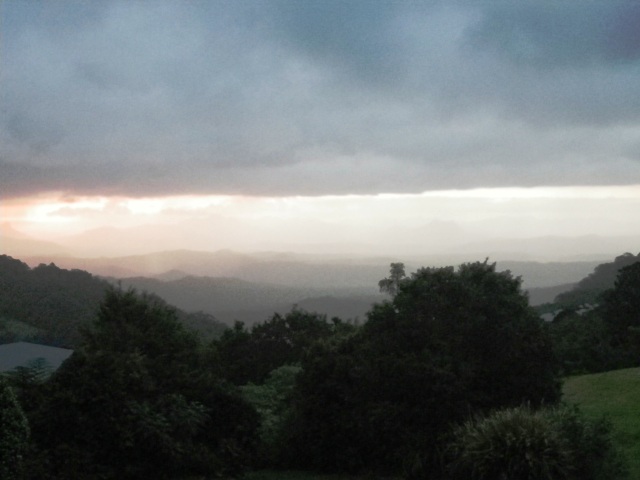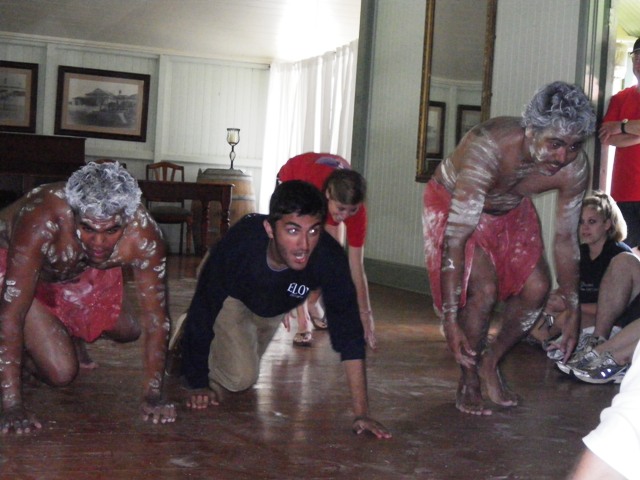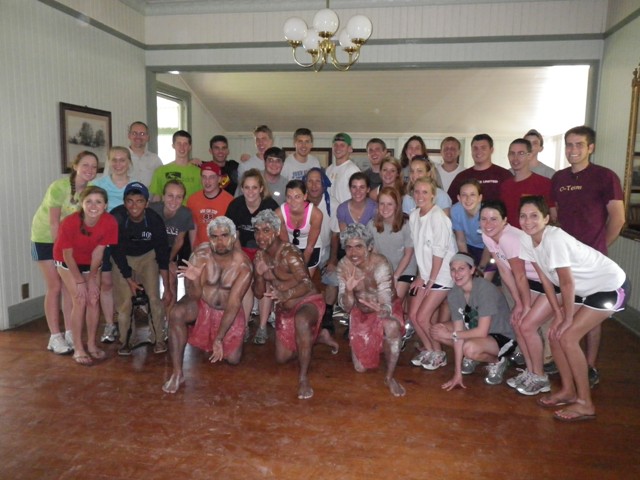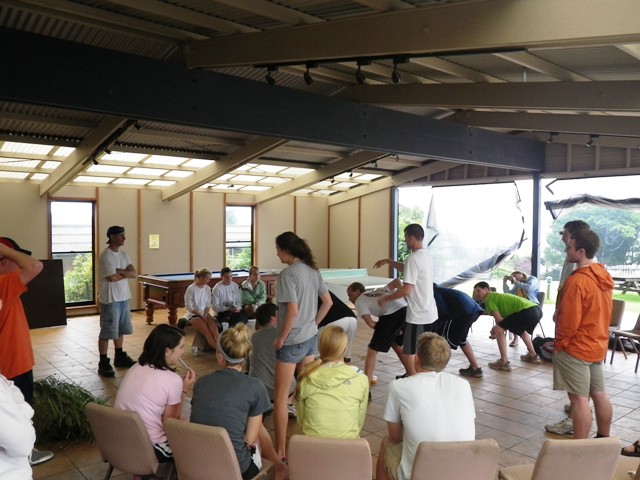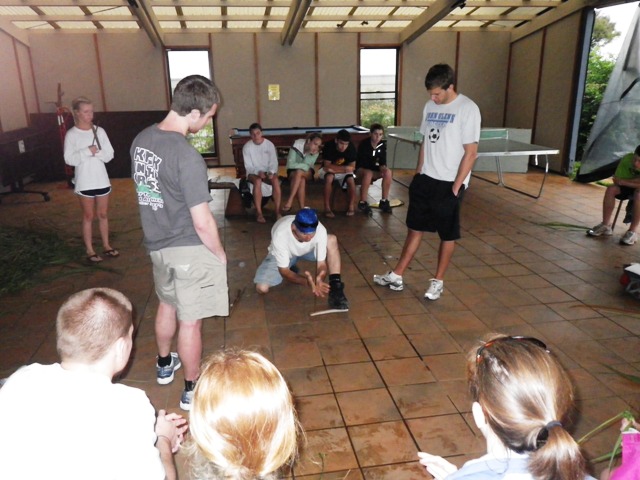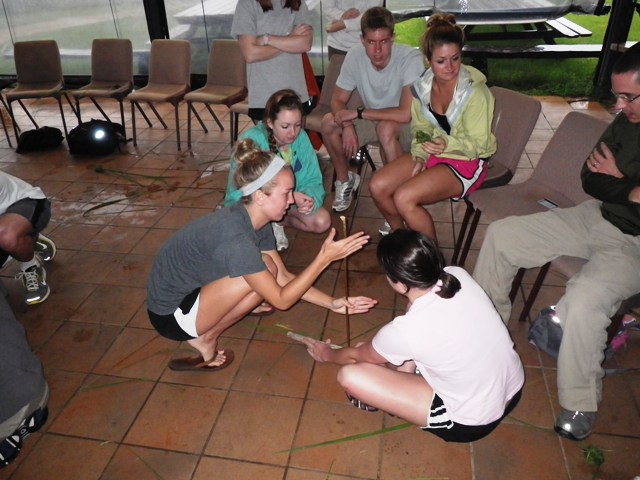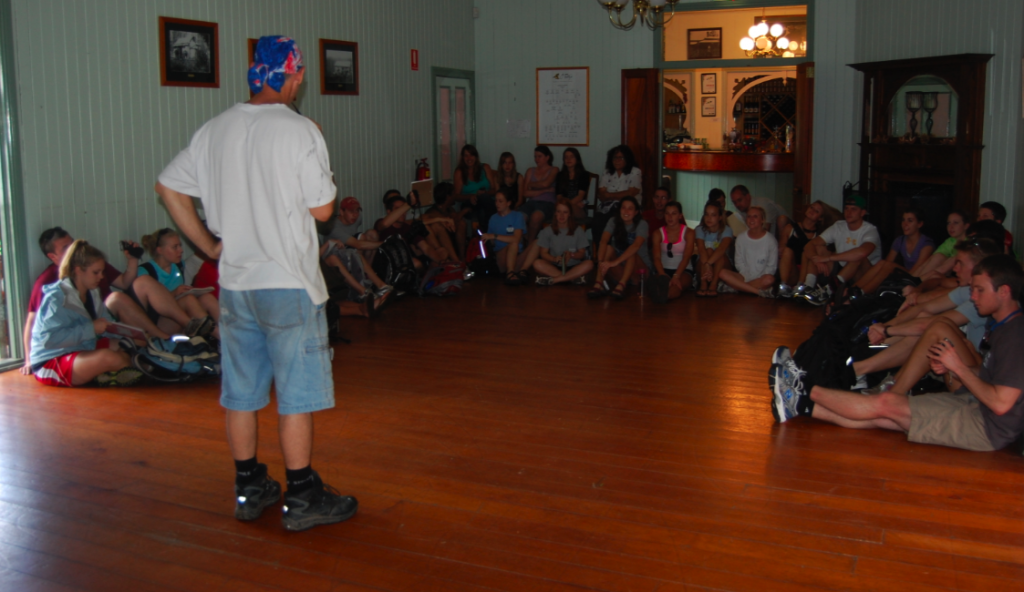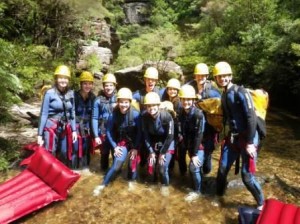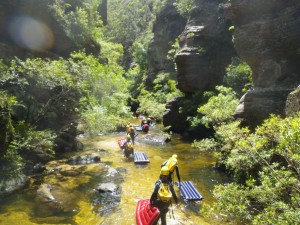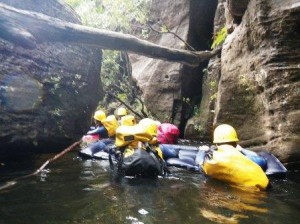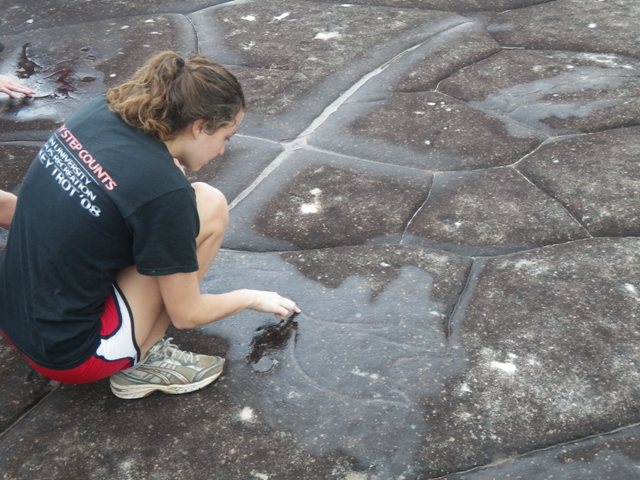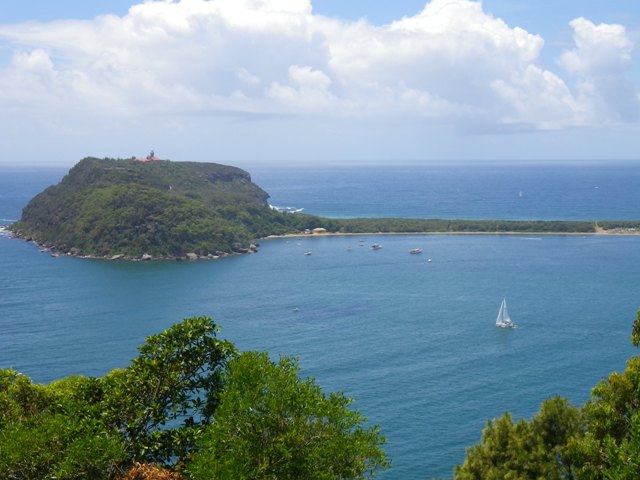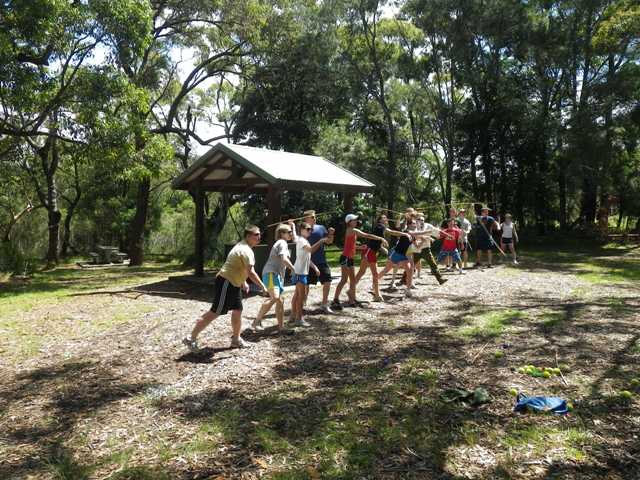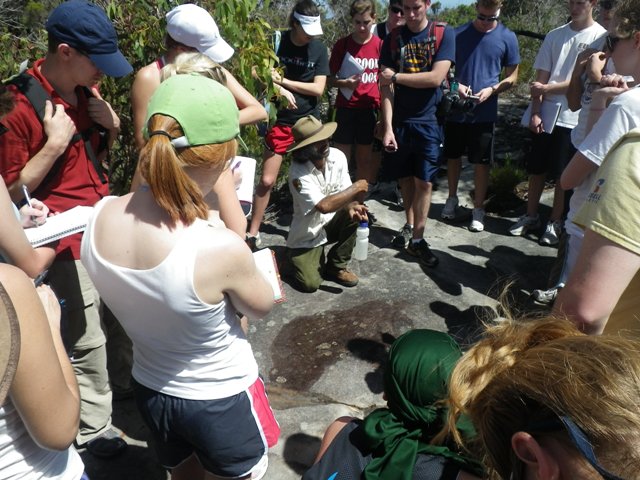Jan 16 2011
Finally Sun…And Lots of It
When you step off the plane in Carins (pronounced “Cannes”) you know you are in the tropics. This place is very green and very humid. We gathered our bags quickly and headed to our coach. Our coach driver provided us with some insight about the local area. The basic message was “there are crocs everywhere”. We all took note of this as we headed to the hotel.
Our group spent yesterday afternoon at Reef Teach. This company exists to do land based education about the reef. We learned a great deal about the plant and animal life we would see today on our snorkeling excursion. To say there was a lot to learn is an understatement.
Following Reef Teach we decided to have a group dinner at a place called Outback Jacks. This location was chosen because of its proximity to a very large population of fruit bats. For those unfamiliar, these are bats about the size of a small Cessna. Around 6:30 every evening they decide to leave their resting places in the trees and fly in circles. This daily activity is like something out of an Alfred Hitchcock movie. Our bats did not disappoint.
We set out this morning at 7am for a day long adventure that would take us to two different snorkeling locations. It was two hours to our first destination. This gave everyone adequate sunscreen application time. Sunscreen isn’t a suggestion here; it is a way of life. I’d guess between the 31 of us that comprise our travel group, we probably used about two gallons of sunscreen today. Step two was to collect a “stinger suit”. Stinger suits are necessary due to the number and potency of the jelly fish that inhabit the reef this time of year. The suits aren’t the most flattering fashion statements but for the most part everyone was happy to protect themselves from potential stings as well as the intense sun.

Upon arrival on the reef everyone quickly disembarked. Some were trying to find Nemo, others were looking for sharks. Perhaps the biggest quest today was for a glimpse of some friendly sea turtles. We had plenty of Nemo sightings and even a few shark sightings at site one.


After an hour or so in the water everyone started to become quite hungry. So back aboard we climbed just in time for a very good meal served up by our fun and capable crew.
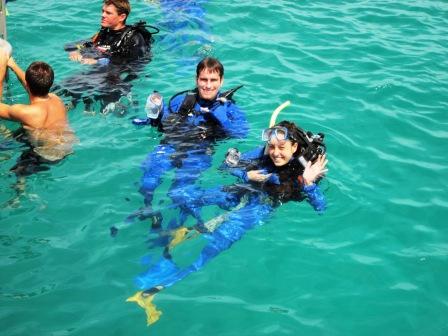
Then it was on to sight two. Following yet more sunscreen application time and rehydration we arrived at a small island that provided yet more opportunities for fun fish finds. The biggest “get” of the day was a very large sea turtle spotted at the end of our time at sight two.
I am happy to report that despite intense sun no one in our group got more than a mild burn and no one was stung by a jelly fish.
This evening everyone is off exploring Cairns and/or completing assignments for our course. Tomorrow is a day to explore Fitzroy Island just off the coast. We will spend the day snorkeling, sea kayaking, and hiking.

